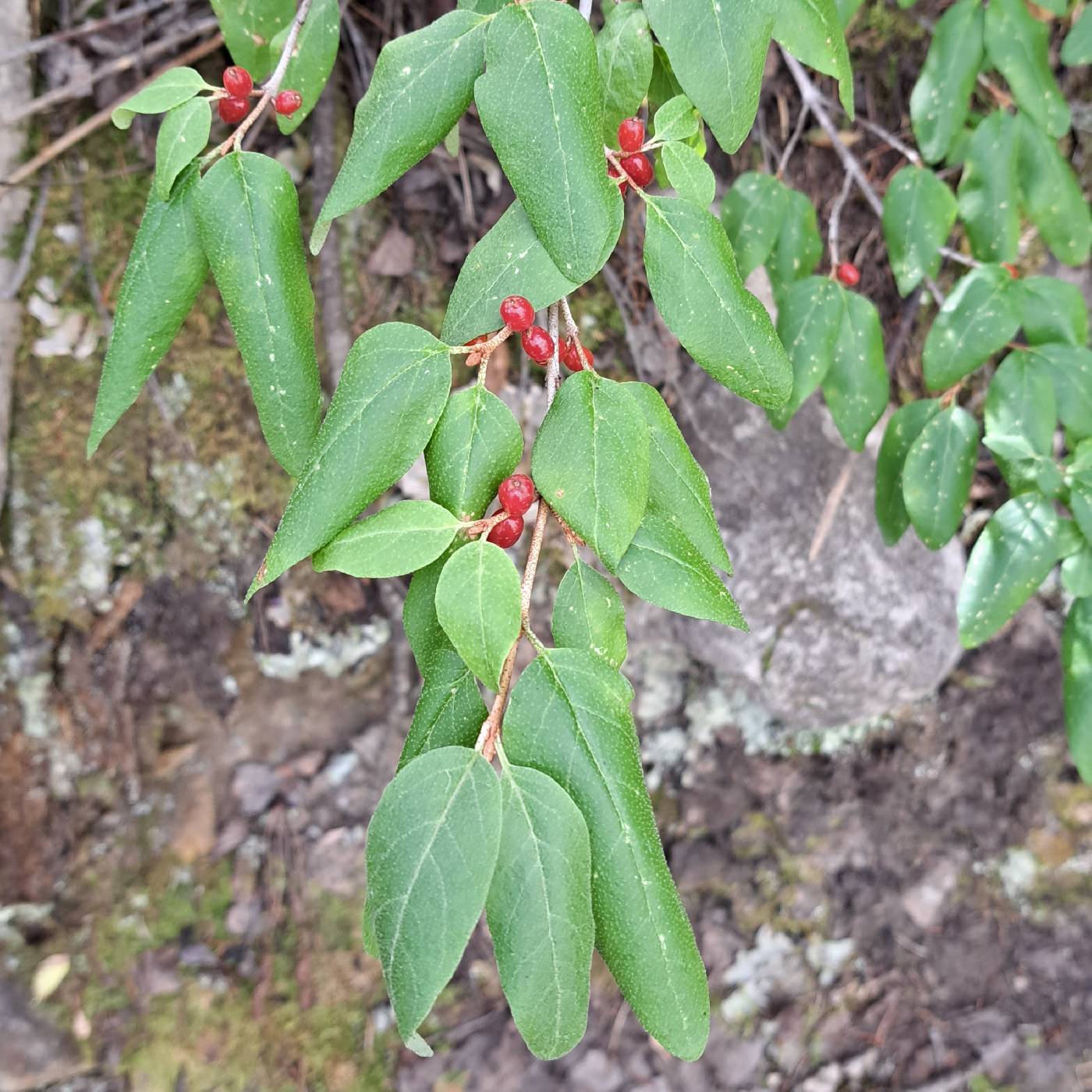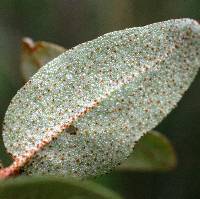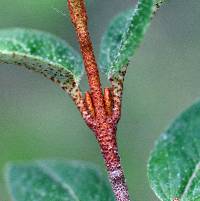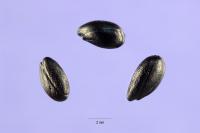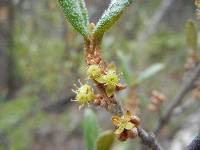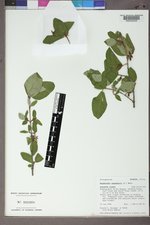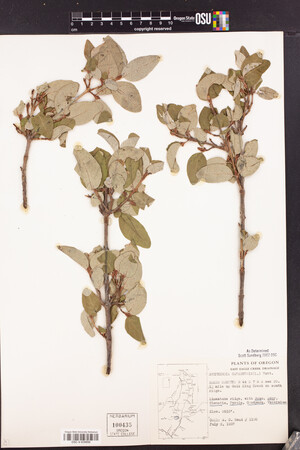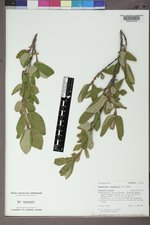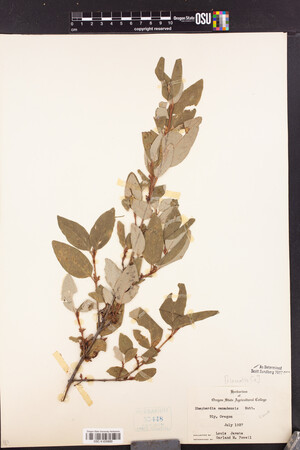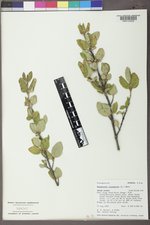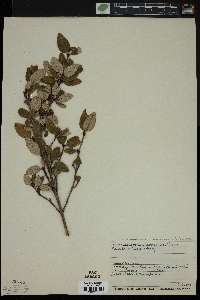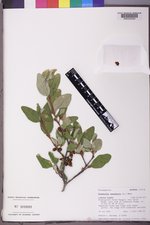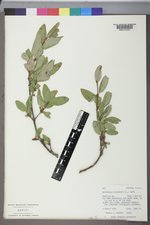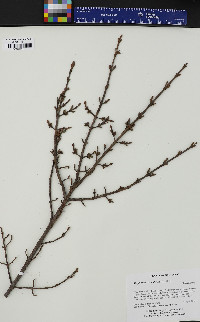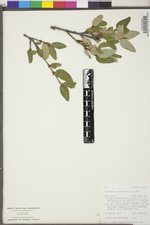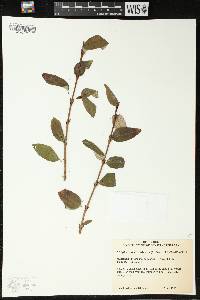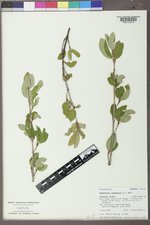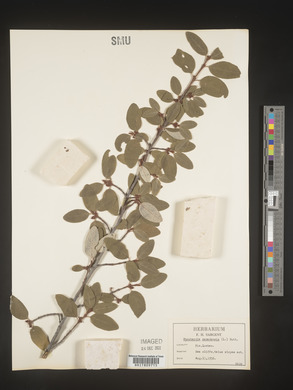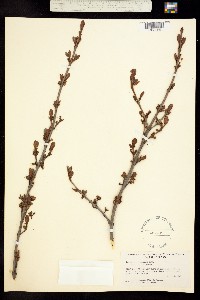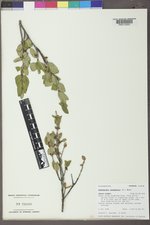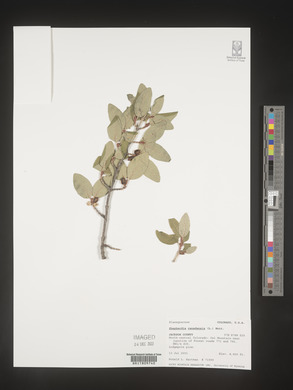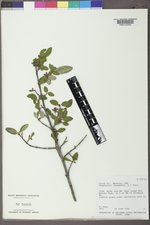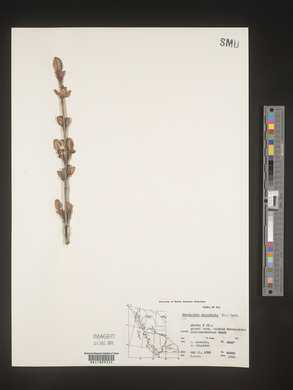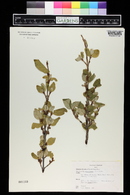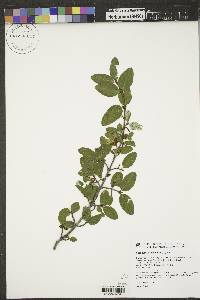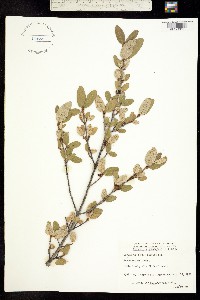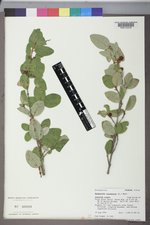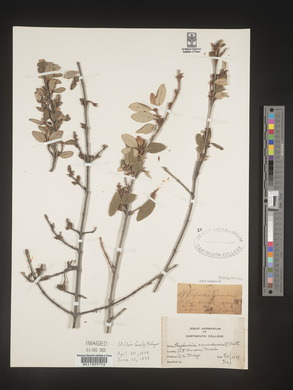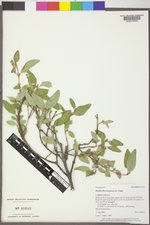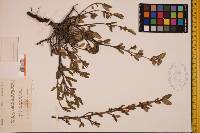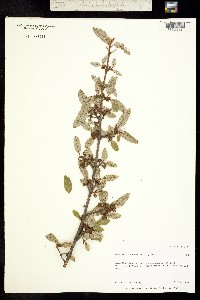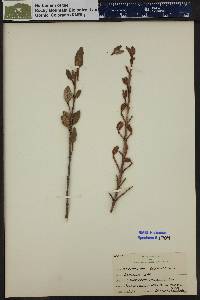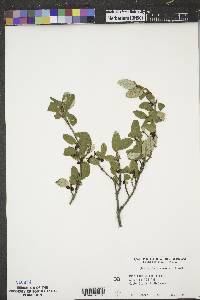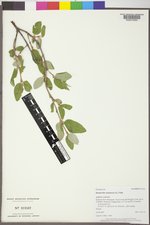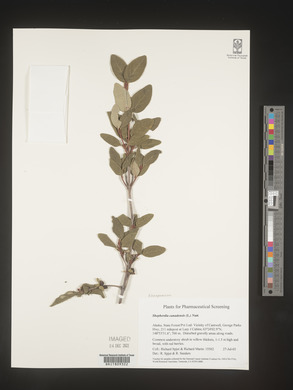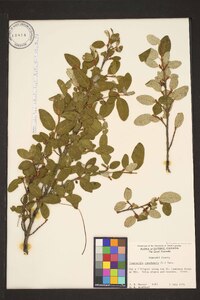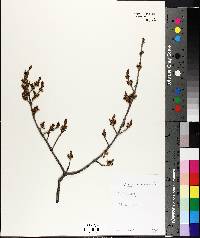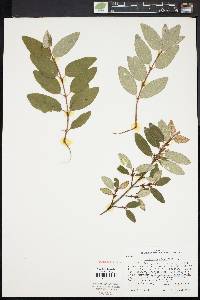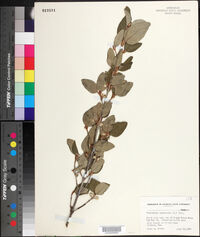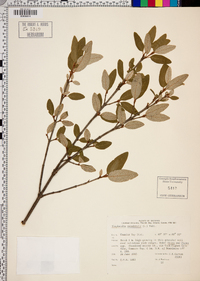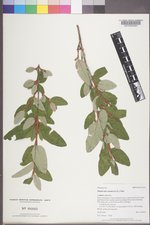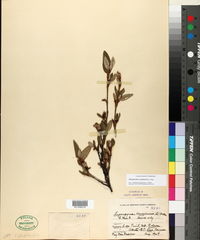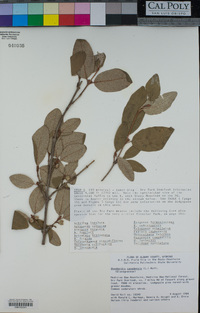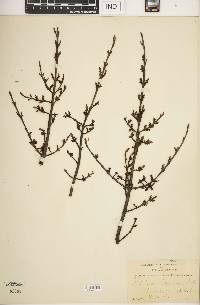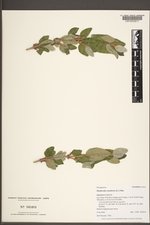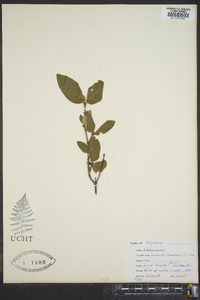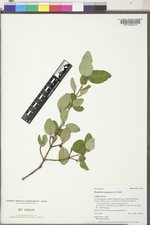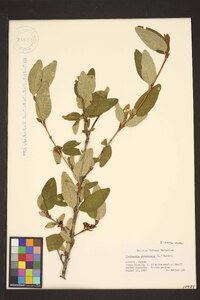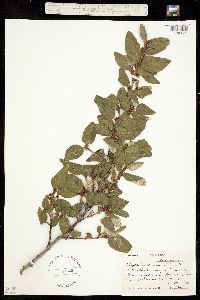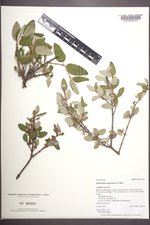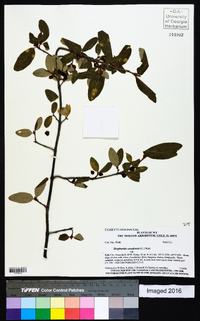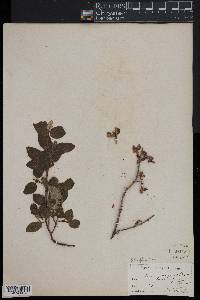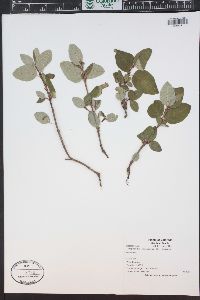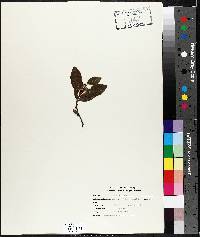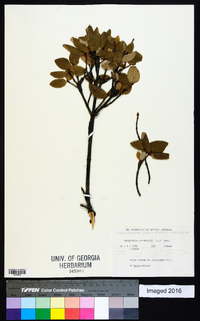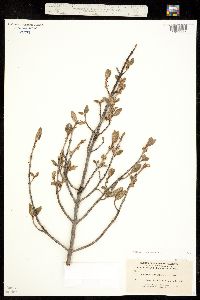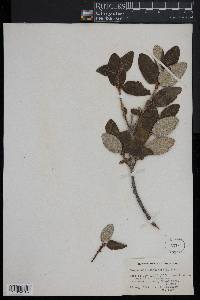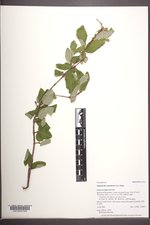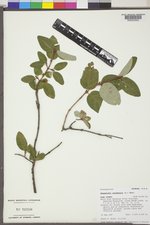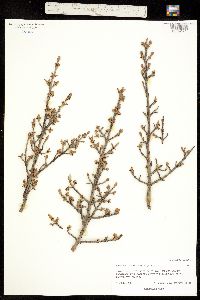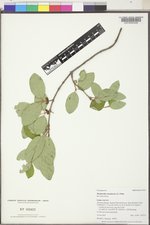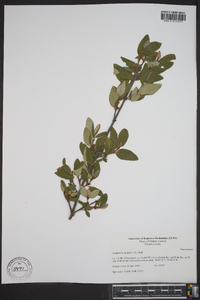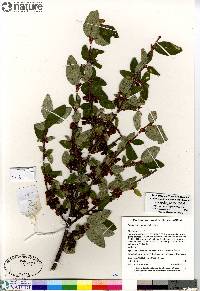
|
|
|
|
Family: Elaeagnaceae
Russet Buffalo-Berry, more...russet buffaloberry
[Elaeagnus canadensis (L.) A. Nels., moreLepargyrea canadensis (L.) Greene] |
Shrub 1 - 3 m tall, as wide as tall Leaves: opposite, dark green, 3 - 7 cm long, 1.5 - 4 cm wide, egg-shaped to narrow elliptic or lance-shaped, few hairs above, dense white hairs with few brown scales beneath. Flowers: either male or female, borne on separate plants (dioecious), in small spikes or solitary, yellowish, tiny. Fruit: fleshy with an achene in the center (berry-like), red, occasionally yellow, elliptic to egg-shaped, 6 - 9 mm long. Twigs: reddish brown with scales. Buds: stalked, solitary or in small clusters, tiny, egg-shaped, covered by two to four scales that meet without overlapping (valvate). Similar species: All species of the Elaeagnaceae family in the Chicago Region have silvery-whitish leaves with non-toothed margins, flowers with a tubular calyx and lacking petals, and berry-like fruit. Unlike Shepherdia canadensis, Elaeagnus angustifolia, Elaeagnus umbellata, and Elaeagnus multiflora each have an alternate leaf arrangement. Flowering: mid April to early May Habitat and ecology: Near the Lake Michigan shore along lake bluff ravines or calcareous clay bluffs. The species is drought and high pH tolerant, but does not tolerate shade. It also has a symbiotic relationship with a nitrogen-fixing bacteria. Fire suppression has caused bluff ravines to become heavily shaded and erode, making S. canadensis one of the Chicago Region's rarest shrubs. Occurence in the Chicago region: native Notes: Shepherdia canadensis is able to withstand fire by resprouting from the root crown. Etymology: Shepherdia is named after John Shepherd (1764 - 1863), botanist and curator of Liverpool Botanical Gardens. Canadensis means "from Canada." Author: The Morton Arboretum Common Name: russet buffaloberry Duration: Perennial Nativity: Native Lifeform: Shrub General: Shrub mostly 1-2 m (3-7 ft) tall; branches unarmed; twigs brownish scaly. Leaves: Opposite, simple, ovate or lanceolate to elliptic, 2.5-5 cm long, green and nearly glabrous above, silvery and rust-dotted beneath, margin entire, base rounded or acute, apex rounded; blades petiolate. Flowers: Male and female flowers on separate shrubs; flowers solitary or few, arising in the axils of leaves; calyx 2- 3 mm long, the outer surface brown, pale greenish yellow within. Fruits: Drupe-like, ellipsoid, 4-6 mm long, yellowish red, juicy, unpalatable. Ecology: Found in coniferous forests, damp habitats from 7,000-9,000 ft (2134-2743 m), flowers April-July. Distribution: Apache (White Mountains) and Coconino (Kaibab Plateau) counties; north-central and western U.S. Notes: Russet buffalo-berry is a nitrogen fixer and is often used for revegetating disturbed sites. It is able to withstand fires of low and moderate intensity by resprouting. Root cuttings are thought to be the best method for propagation because seeds often exhibit poor germination. It is generally considered to provide poor forage and browse. However, the fruits are an excellent food source for many birds and mammals. Ethnobotany: This species has numerous ethnobotanical uses, but most commonly the somewhat sour and bitter berries are crushed, mixed with water and sweetener, and whipped to create a frothy delicacy. Editor: Springer et al. 2011 Unarmed deciduous shrub 1-3 m; lvs ovate to narrowly elliptic or lanceolate, the larger ones 3-7 נ1.5-4 cm, obtuse to subcordate at base, green and nearly glabrous above, densely whitish-lepidote-stellate and with scattered brownish scales beneath; fls in last year's naked axils; staminate fls with ovate, spreading sep 1.5-3 mm; pistillate fls with sep 1-2 mm, the mouth of the hypanthium occluded by pubescence; fr red or sometimes yellow, bitter, ellipsoid, 6-9 mm; 2n=22. Various habitats, often on calcareous substrate; Nf. to Alas., s. to N.Y., n. Ind., S.D., and Ariz. Apr., May, with the lvs. Gleason, Henry A. & Cronquist, Arthur J. 1991. Manual of vascular plants of northeastern United States and adjacent Canada. lxxv + 910 pp. ©The New York Botanical Garden. All rights reserved. Used by permission. From Flora of Indiana (1940) by Charles C. Deam Near the bases of low dunes near Pine in Lake County where it is infrequent. In 1906 I found it about 2 miles east of Indiana Harbor. City development is fast encroaching upon its native area and it will soon become extinct in Indiana. It is the first shrub of Indiana to bloom and it is soon followed by leatherwood and certain species of willow. …… Indiana Coefficient of Conservatism: C = 10 Wetland Indicator Status: UPL |

